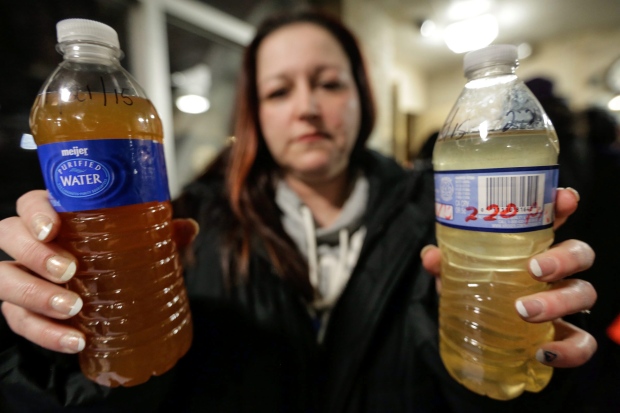Residents of Flint, Michigan are going through a situation no human being should ever face in their lives. Their water is highly contaminated with lead and, of course, putting their health at risk. Considering the situation is chaotic, they are not alone in this polluted episode.
Other communities could be facing this problem too and their lives could be in danger if the elected officials do not care about improving the U.S. water infrastructure. In the last few years, there have been many reports of waters highly contaminated with lead in the area of Washington D.C. and Providence, among other places. This concern should also focus on checking the state of the aging pipes that deliver water to the homes of millions of Americans.

This is a major problem that in a matter of time it could burst and affect many lives, this is a matter that should be addressed by policymakers at all levels of government immediately. That’s why the Teamsters last year rolled out its “Let’s Get America Working” platform that specifically addressed the need to invest in better water facilities.
A 2013 report by the American Society of Civil Engineers (ASCE) rated the nation’s drinking water a “D” due to the country’s water infrastructure is about to lose the functionality it had before and they must be upgraded or improved to meet increasing federal and state environmental requirements that add to the funding crisis. Not meeting the investment needs of the next 20 years risks reversing the environmental, public health, and economic gains of the last three decades.
Money and maintenance will solve the problem
The cost over the next 25 years could reach more than $1 trillion, according to the American Water Works Association (AWWA). The group notes the needs are greater than $1,000 per person in five regions: Far West, Great Lakes, Mid-Atlantic, Plains and Southwest. Capital spending has not kept pace with needs for water infrastructure. The trend toward state and local governments’ assuming the bulk of the investment requirements in the coming decades will continue, with local governments paying an increasing share of the costs.
A recent report by AWWA says that the main priority is to replace the pipes that have not been changed more than 50 years ago. It also mentions that delaying the process could only but lead to higher rates of pipe breakage and a reduction in quality of water services. Household water bills will climb higher as a result.
And while much of the public focus might be on urban areas’ water systems, the larger challenge could lie in smaller jurisdictions. The U.S. has more than 52,000 water systems, but some 82 percent of Americans are served by just eight percent of these systems. These smaller utilities will face even larger economic challenges to upgrade their infrastructure because they serve fewer customers but require more pipe miles per customer due to their more rural nature.
Nobody deserves this
Just because these water challenges are widespread, of course, doesn’t mean Michigan Gov. Rick Snyder should be let off the hook for what’s going on in Flint. The situation there is far worse than in other places, they have been dealing with these problems since April 2014. Decisions made by state officials over the last year-and-a-half have led to a community being forced to use water from the Flint River – a source that has been found to contain unacceptable levels of lead
America needs new water infrastructure and invest on them, this won’t just improve public health but the development of a better nation as well.
